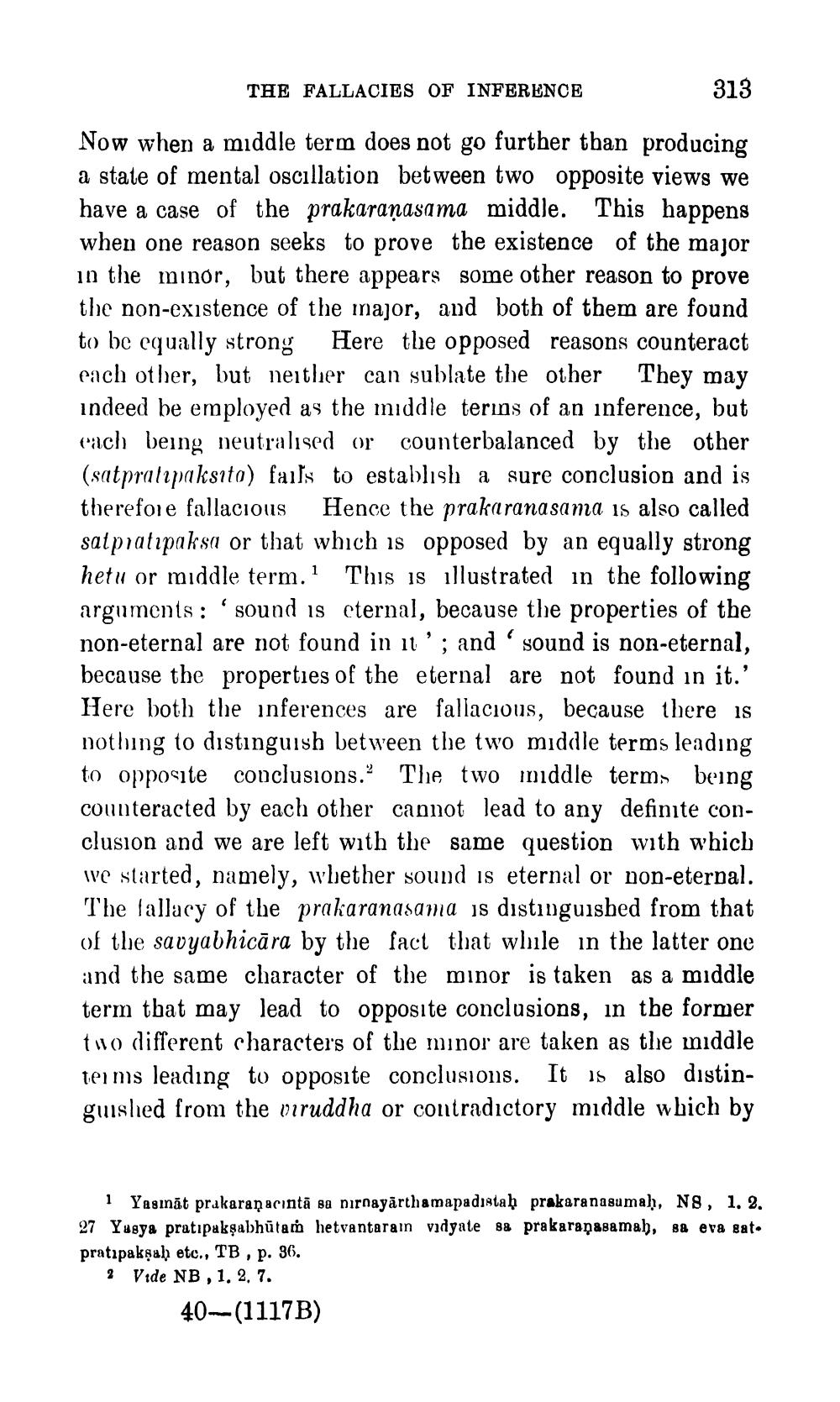________________
THE FALLACIES OF INFERENCE
1
Now when a middle term does not go further than producing a state of mental oscillation between two opposite views we have a case of the prakaranasama middle. This happens when one reason seeks to prove the existence of the major in the minor, but there appears some other reason to prove the non-existence of the major, and both of them are found to be equally strong Here the opposed reasons counteract each other, but neither can sublate the other They may indeed be employed as the middle terins of an inference, but each being neutralised or counterbalanced by the other (satpratipaksita) fails to establish a sure conclusion and is therefore fallacious Hence the prakaranasama is also called satpratipaksa or that which is opposed by an equally strong hetu or middle term. This is illustrated in the following arguments: 'sound is eternal, because the properties of the non-eternal are not found in it'; and sound is non-eternal, because the properties of the eternal are not found in it.' Here both the inferences are fallacious, because there is nothing to distinguish between the two middle terms leading to opposite conclusions. The two middle terms being counteracted by each other cannot lead to any definite conclusion and we are left with the same question with which we started, namely, whether sound is eternal or non-eternal. The fallacy of the prakaranasama is distinguished from that of the savyabhicāra by the fact that while in the latter one and the same character of the minor is taken as a middle term that may lead to opposite conclusions, in the former two different characters of the minor are taken as the middle terms leading to opposite conclusions. It is also distinguished from the viruddha or contradictory middle which by
(
313
1 Yasināt prakaran acinta sa nirnayārthamapadistaḥ prakarana sumaḥ, N8, 1.2. 27 Yasya pratipaksabhutaṁ hetvantaran vidyate sa prakaranasamah, sa eva sat. pratipakṣaḥ etc., TB, p. 36.
2 Vide NB, 1, 2, 7.
40-(1117B)




